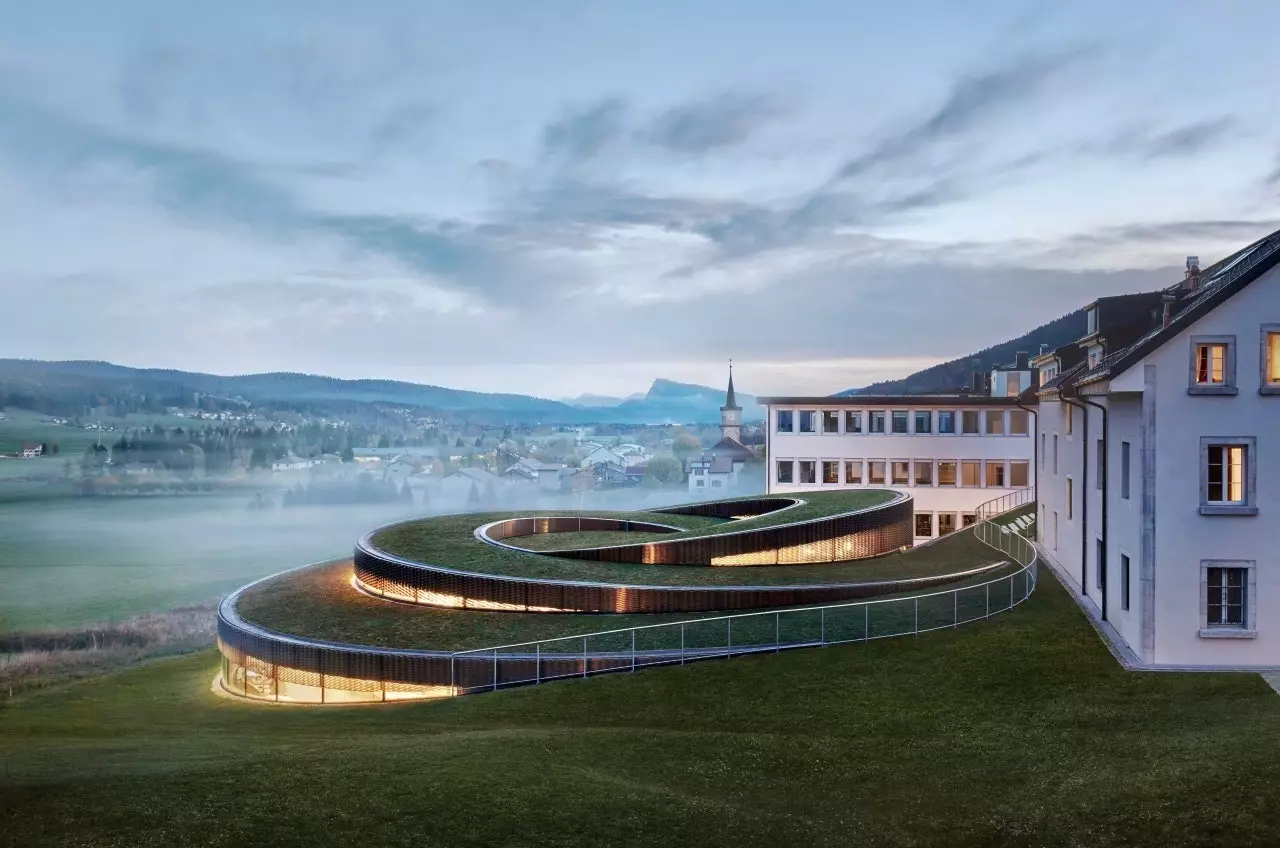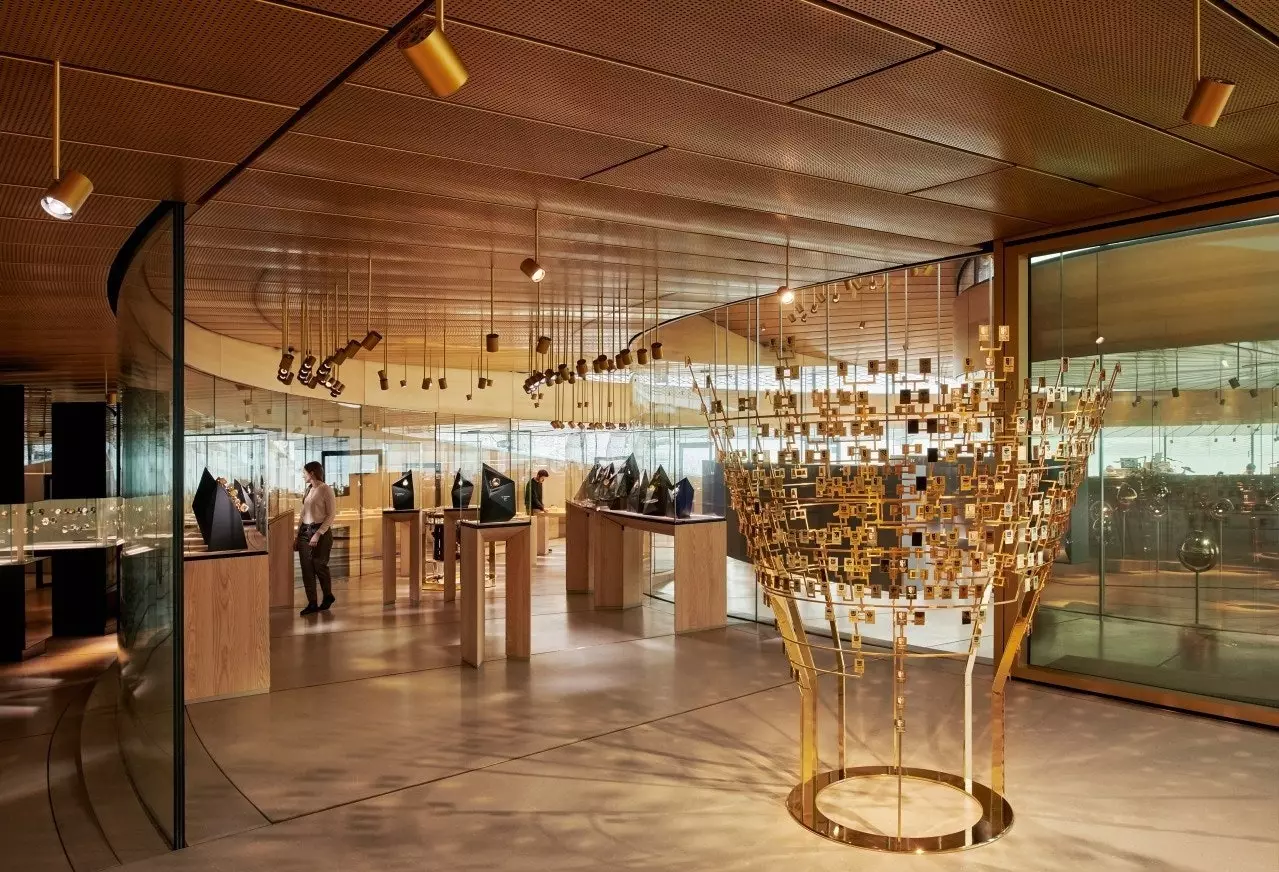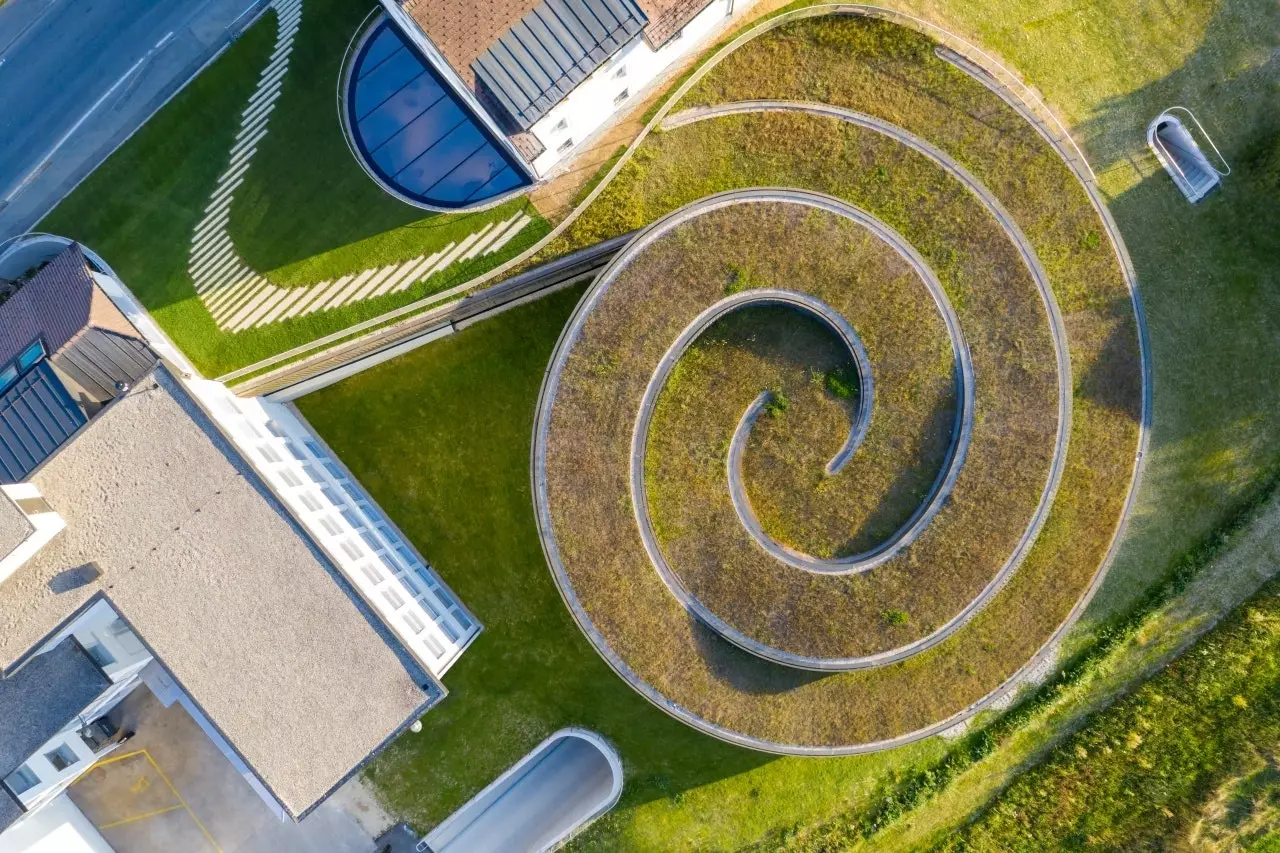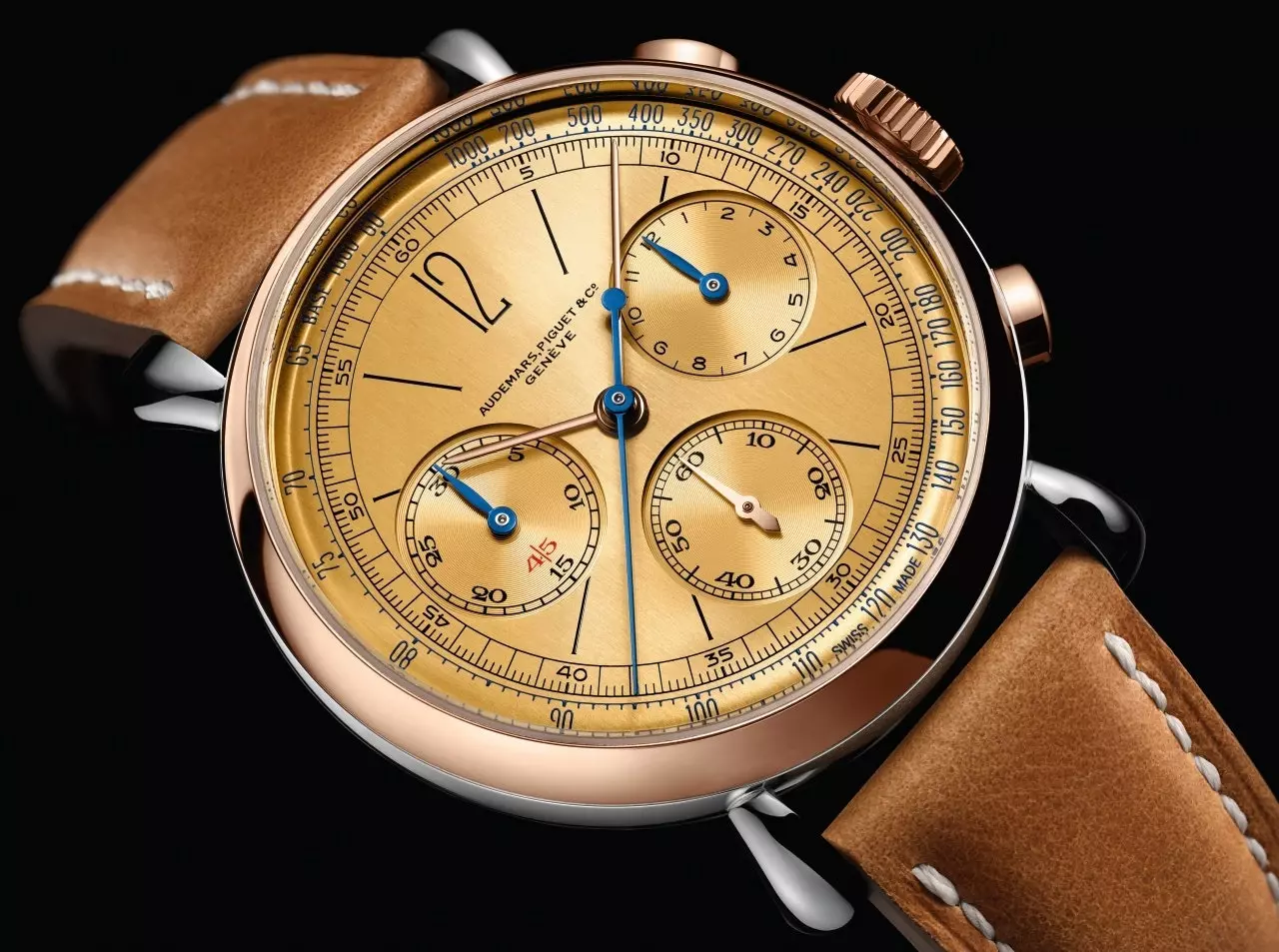
Extension of the historic facilities of the fine watchmaking firm Audemars Piguet, in Le Brassus (Switzerland).
The great companies of the world have been commissioning avant-garde buildings from star architects for more than a decade. unusual places. Destinations that have, as in this case the Swiss city of Le Brassus, **a great sentimental value for these companies. **
The great commitment of the haute horlogerie firm Audemars Piguet was precisely this: that in the city where the brand was born in 1875, and connected to its historic building, the extension of an avant-garde museum would be built that would drink and be part of the landscape of the Valley of Joux, from which they have always been projected to the world and which, for centuries, has inspired its watchmaking craftsmen.

Designed by Atelier Brückner, the scenery creates an immersive experience.
AUDEMARS PIGUET ATELIER MUSEUM
It is true that as you enter the heart of this Swiss valley, winding through the peaks of the Jura, crossing deserted roads, isolated from everything and in total calm, what you least expect is that this context of nature in its purest state 'hides' one of the most interesting architectural projects of 2020: the Musée Atelier Audemars Piguet. A striking glass spiral structure, subtle and complex at the same time, signed by one of the most influential architects of our time, the Danish Bjarke Ingels.
The oldest haute horlogerie manufactory in the world, which is still owned by the founding families: Audemars and Piguet, is rooted like this museum in what is known as the valley of clocks. The firm also wanted that in the result of the construction of the museum visitors had a very direct contact with the artisans who work here, the true protagonists of a legendary brand in the world of watchmaking.
The expansion of its museum facilities, with which to tell the world about the immense artisan legacy that they treasure, connects the original 19th century building with this avant-garde and sustainable luminous spiral. The visit to the museum becomes an experience, in all senses, difficult to forget since it goes through it as if we were entering the bowels of the very mechanism of one of his very complex clocks.
The elegant setting of the building, which blends architecture and landscape, is the perfect place to enjoy more than 300 watches on display, that are authentic masterpieces of miniaturization, technical complexity and design, and that summarize the history of those modest craftsmen of the 19th century who captivated the world with their creations.

The spiral structure signed by Bjarke Ingels is impressive, subtle and complex at the same time.
BREAK THE RULES, BUT MASTER THEM FIRST
The company's motto has always been this: "To break the rules, you must first master them", and this is what Audemars Piguet has done for generations, **change the rules of the game from a deep respect for tradition. **
The exhibition is traversed as if it were the spiral of a clock, somehow flowing through its ramps and enormous curved windows, losing sight of the horizon of the valley at times and, at others, letting you hypnotize by the work of its craftsmen and the beauty of the pieces that appear in your way exposed in thousands of different ways.
Here everything is millimetrically thought out. German museum design firm Atelier Brückner posed the exhibition as if it were a key to a musical score in which interludes are combined in the form of sculptures, automata, kinetic installations and models of intricate mechanical movements, which give life and rhythm to the various aspects of technique and design involved in watchmaking. The result is an immersive experience, during which time, paradoxically, seems to have stopped.
during the tour several of the ancestral techniques perpetuated by the experts are tested in signature finishes such as brushed satin and pearlescent. And in the center of the spiral, towards which the building itself will lead you, awaits you the spectacular exhibition of the Great Complications workshop. The striking, astronomical and chronograph parts revolve around the model Universelle (1899), the most complicated pocket watch ever produced by Audemars Piguet drawing a show of indisputable beauty.
Finally, the avant-garde connects with history and the building where everything was born. On the upper floor where Jules Louis Audemars and Edward Auguste Piguet established their workshop in 1875 everything has been remodeled to make it more faithful to the original state. Dozens of local artisans have participated in the careful restoration of the Maison des Fondateurs to the Swiss architecture firm CCHE and the Audemars Piguet Wealth Management department.
And as a perfect complement to the visit, next year will be the date on which the watchmaker debuts the Hôtel des Horlogers, a sustainable, comfortable and contemporary accommodation that will also sign the BIG studio, by Bjarke Ingels –surely it will surprise us again– and CCHE as a local architecture studio, turning Le Brassus into one of the unpostponable travel appointments for next year.

Reissue of a 1943 Audemars Piguet chronograph.
Address: Route de France, 18, 1348, Le Brassus, Switzerland View map
Schedule: Visits from Monday to Friday at 2:00 p.m. and 3:00 p.m. (with prior reservation).
Half price: 30 Swiss Francs
